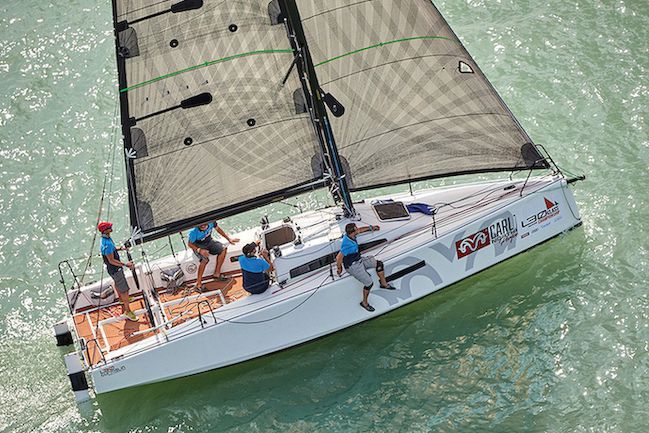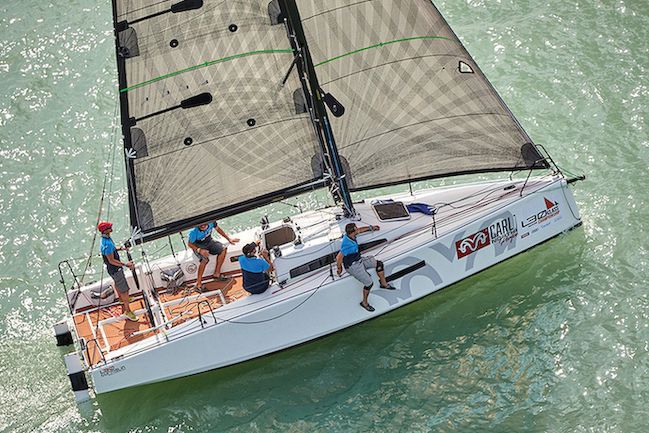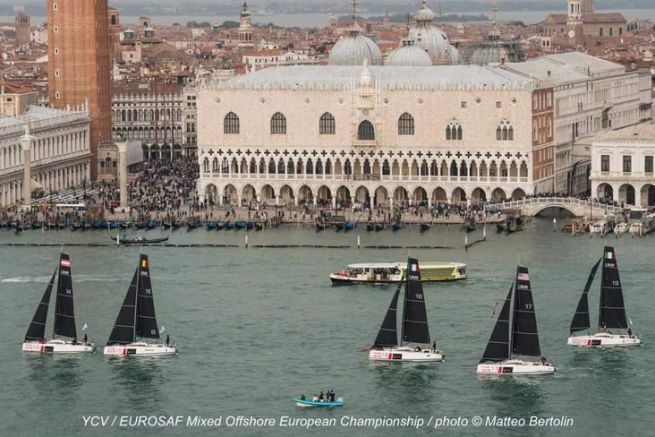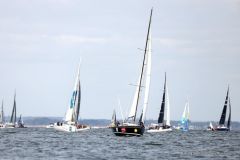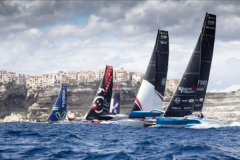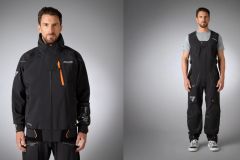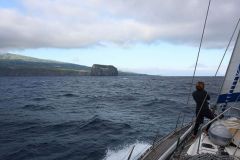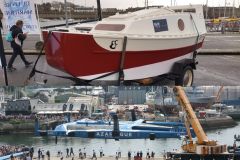The L30 concept
The L30 was developed by Rodion Luka, Olympic medallist (2004), world champion (2005) in the 49er class and participant in the Volvo Ocean Race 2008-2009. He joined Andrej Justin, designer of the RC44 to build the L30 in Ukraine. The one-design highlights the qualities of the sailors on an identical support and the objective of the L30 is to offer an international ocean racing circuit.
The L30 is a light boat, easy to use with a playful small crew. But the designers also wanted to offer a versatile boat with a layout adapted to small family cruises.
However, the L30 is not a great novelty, as the boat is due out in 2015. Until then absent in France, his selection as official support for the championship organised by World Sailing (International Sailing Federation), gives him a real spotlight. It is even questionable whether this boat will be selected for the 2024 Olympics, and the answer will be in 2023.
In 2019, this boat was presented in Cannes as well as at the Paris boat show for the first time. That's when we visited it. We discovered a boat with atypical characteristics, but interesting.
Why so narrow?
To be transportable on a trailer or in containers the L30, which is 9.54m long, is only 2.54m wide. This remarkable narrowness also corresponds to a philosophy that gives more importance to ballast stability than shape stability.
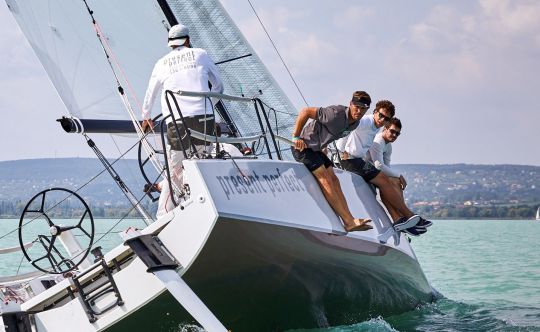
In comparison an L30 is 1.16m narrower than the Pogo30, the most extreme of the 30' performance category. This narrowness also allows for a certain lightness. Its reasonable weight of 1.8t (light) makes transportation realistic if you have a pickup truck or a big, heavy sedan.
A lifting keel
For transport and cruising versatility, the "T" keel can be raised. It is a simple vertical lifting system with a hoist. But be careful in case of impact, no pivoting to limit structural damage... The rudders can also be raised vertically.
The cockpit
This one is particularly long for use with a small crew. At the stern, one will not fail to notice with astonishment the two steering wheels, which may seem a little "too much" for a 30' regatta boat.
Indeed, associated with the long cockpit, it corresponds more to a crew philosophy than to the imperatives of solo or double-handed sailing. It is perhaps also a nod from Rodion Luka to the Volvo Ocean Race boats, which are 20m long and 5.60m wide.
The sheeting winches are close to the steering wheels, unfortunately they are not really usable by the helmsman.
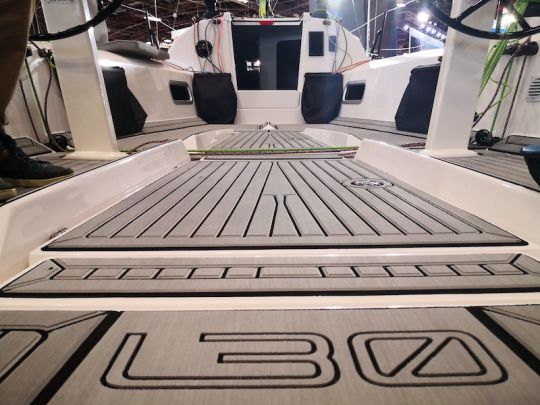
The bridge
Going through the huge cockpit towards the roof you reach the piano where most of the manoeuvres and adjustments are made.
The gangways are necessarily tight on such a narrow sailboat. Passing between the carbon mast, and the Rod shrouds, we arrive on the small foredeck which integrates the bowsprit.
The telescopic carbon spars is embedded in a recess in the deck, unfortunately a cover glued to the deck does not allow access to the mechanism. It should nevertheless be noted that the diameter 6 outlet end of the halyard leads to fears of elasticity and loss of halyard stiffness when using the gennaker.
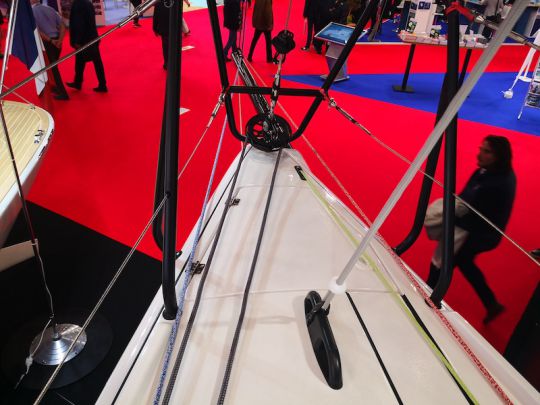

Interior design
The L30 is surprising, as you enter through the downhill, you can see a real effort of development that makes this monotype quite versatile. Of course, space is limited in this narrow sailboat, but 4 people will be able to make a small cruise.
The vertical keel well is facing the companionway, on its starboard side, bulkheads provide a bathroom area. On board, the movements are to the port side of the keel.
The electric panel placed at the fall of the companionway, it is quite exposed to the water splashes that will pass through the companionway and to the shocks during the ramming from one side to the other. The saloon and the kitchen are small, but have the minimum necessary for 4 people.
Under the cockpit benches, there are two coffin berths that will be used for racing matossage. At the front, a rather narrow Breton bed still allows two people to sleep.
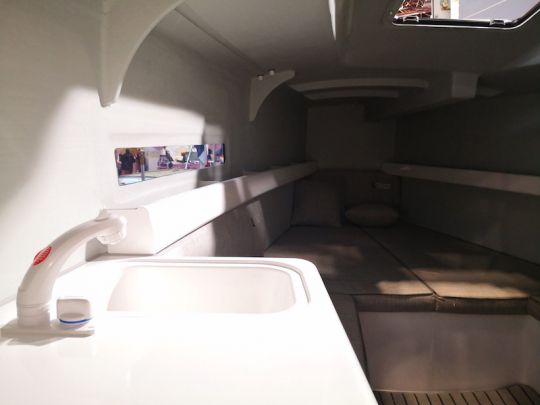
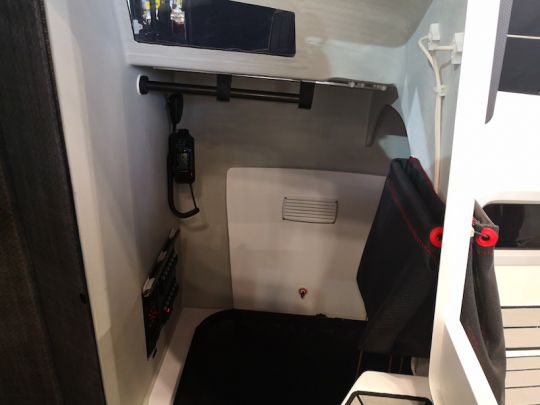
Provisional L30 pre-test report
The L30 promises good performance, offshore capabilities, easy logistics, and strict one-design, all for a price, ready to race, of less than 200,000 euros including tax. By way of comparison, in the 30' one-design offshore racing category, a Figaro3 will cost twice as much and a Dehler 30OD 50% more. We hope to be able to try this boat out soon.
There are still few L30s in France, as the market is already well occupied by many offshore regatta yachts. However, the reasonable price may be able to attract racers with limited financial resources and create a truly international and sporty offshore racing championship.
